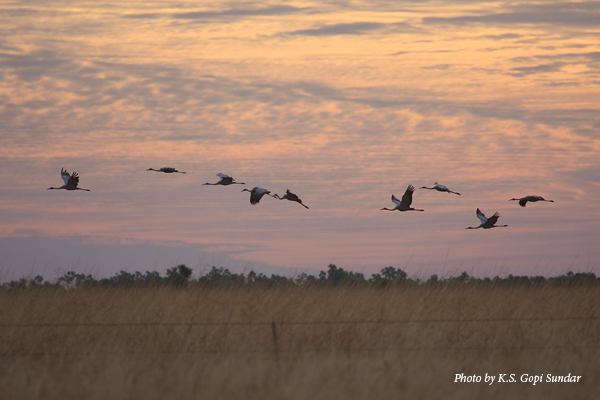
Yesterday evening (India time), I received a message from the editor that our submission has been accepted for publication in the journal “Emu – Austral Ornithology.” This journal is Australia’s foremost source of scientific information on birds, and it is not easy to get work published here. Wooo–hooo!!
Our article, “Sympatric cranes in northern Australia: abundance, breeding success, habitat preferences and diet,” was written in partnership with colleagues from the University of Melbourne, University of New South Wales, and independent crane researchers in Australia.
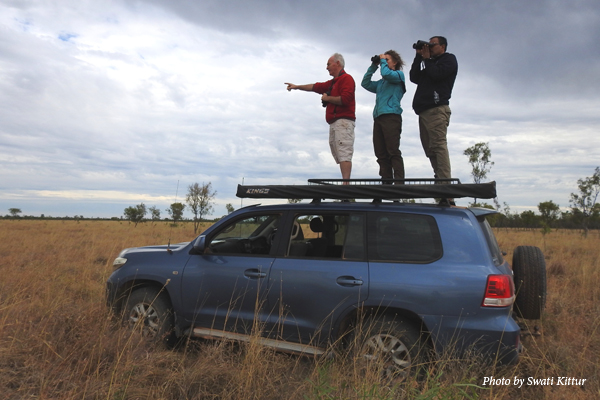
A motley crew of four people conducted field surveys in the Gulf of Carpentaria in northern Queensland during April to May 2017. The survey was backed up by “Mick” McCarthy’s organization at the University of Melbourne, planning by crane researcher Elinor Scambler at the Atherton Highlands, the excellent laboratory of Kate Brandis at the University of New South Wales, and our partners in India, the Nature Conservation Foundation.
The savannas and woodlands along the Gulf of Carpentaria is the only area in the world where the two very closely related cranes, Sarus and Brolga, live and breed together, called sympatry. Our research includes several firsts in terms of documenting crane ecology.
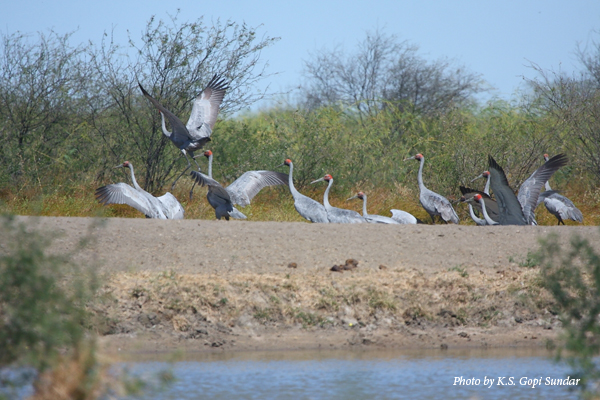
This is the first time anyone has done a repeatable survey in multiple floodplains within a short period of time. Thanks to the skills of our colleague Swati Kittur, we have been able to develop useful maps and obtain data on the different kinds of habitats the two cranes were using. This has enabled us to get a great view of how the two Australian cranes are distributed and to realize that they have different relative numbers in different floodplains. For example, in the Mitchell River floodplain, 93 percent of all cranes counted were Sarus, and only 7 percent were Brolgas, whereas it was nearly opposite in the Flinders floodplain with the ratio 19:81 (Sarus:Brolga). The Mitchell River floodplain had a lot of Eucalyptus-dominated woodlands and savannas, while grasslands were much more dominant in the areas we surveyed at the Flinders River floodplain. Different types of habitats in each floodplain are driving these fascinating patterns.
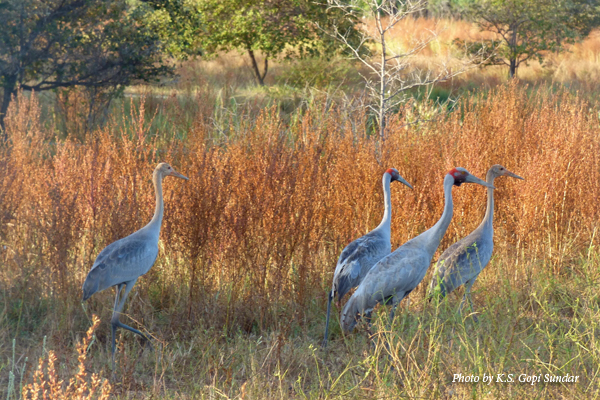
It is also the first time that anyone has done an assessment of crane breeding success, that is the percentage of pairs that had at least one chick fledging, in Australia, including the first-ever measure of Brolga breeding success in the wild. What did we find? Sarus breeding success was 60 percentage – the highest ever breeding success known for any crane species anywhere in the wild! For the Brolga, it was 50 percentage – this is higher than all of the estimates made in the past for Sarus, and may also rank as among the highest in the world. Clearly, despite decades of intensive cattle ranching, the areas along the Gulf of Carpentaria were still incredibly important crane habitats!
Seeing young birds with parents frequently helped us keep our spirits high in the remote gulf as we drove across 3,000 km of Australian grasslands steppe, and Eucalyptus forests. Our colleague John Grant, who has been working on Sarus Cranes in Australia for the last 20 years said he was “gobsmacked” – that he has never ever seen anything like this before!

Interesting, both cranes track rainfall closely before they “decide” to start nesting. This is identical to Sarus Crane behavior in India and Nepal. The Brolgas started nesting earlier than the Sarus in all the floodplains. We are not sure why. Maybe these cranes can do with lesser flooding than the Sarus? Our colleague Inka Veltheim, who works on Brolgas in a different part of Australia, had no immediate explanations either. But the Sarus Cranes nested for a longer period. Who knew!
We also discovered that Sarus Cranes and Brolga are able to live together in the same area because they play nice: they share the amazing diversity of available habitats between themselves, and as a consequence, eat different foods. We found that Sarus Cranes preferred four riverine Eucalyptus-dominated regional ecosystems, with 10 percent using open habitats. Brolgas preferred two non-wooded regional ecosystems, but 32 percent shared Eucalyptus-dominated regional ecosystems with Sarus Cranes.
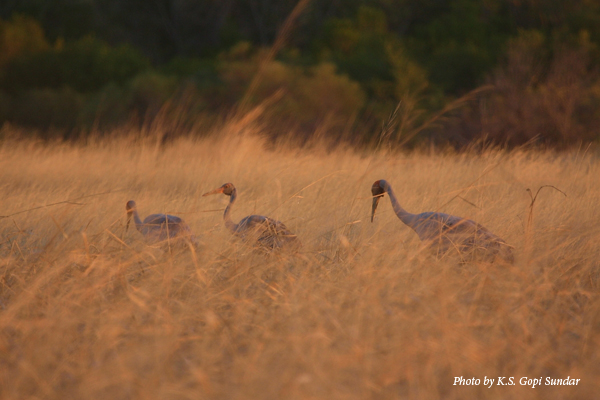
To understand their diet, we analyzed isotopes in molted feathers – a first for the crane world. Both cranes ate different things – another reason that such closely-related species can live in the same area! Sarus Cranes were eating many more different kinds of vegetation, while Brolgas were eating a greater variety of all things, including animal matter. Both species are well known to be omnivorous, or eating both plants and animals, so we were pretty amazed at what the feathers revealed in Kate’s lab.
All of the smaller findings underscored one real big a-ha finding: the two cranes were able to be sympatric due to the incredible diversity of habitats that are found in the Gulf region of Queensland. Our research highlights the need to conserve the diverse habitats of the Gulf region in Queensland and provides basic data for developing long-term conservation plans for these sympatric cranes. This is both timely and critical, as large-scale developments currently planned in this region, with potentially major impacts on cranes, need this information urgently.
 Story submitted by K.S. Gopi Sundar, SarusScape Program Director for the International Crane Foundation. Click here to learn more about our work in Southern Asia.
Story submitted by K.S. Gopi Sundar, SarusScape Program Director for the International Crane Foundation. Click here to learn more about our work in Southern Asia.
